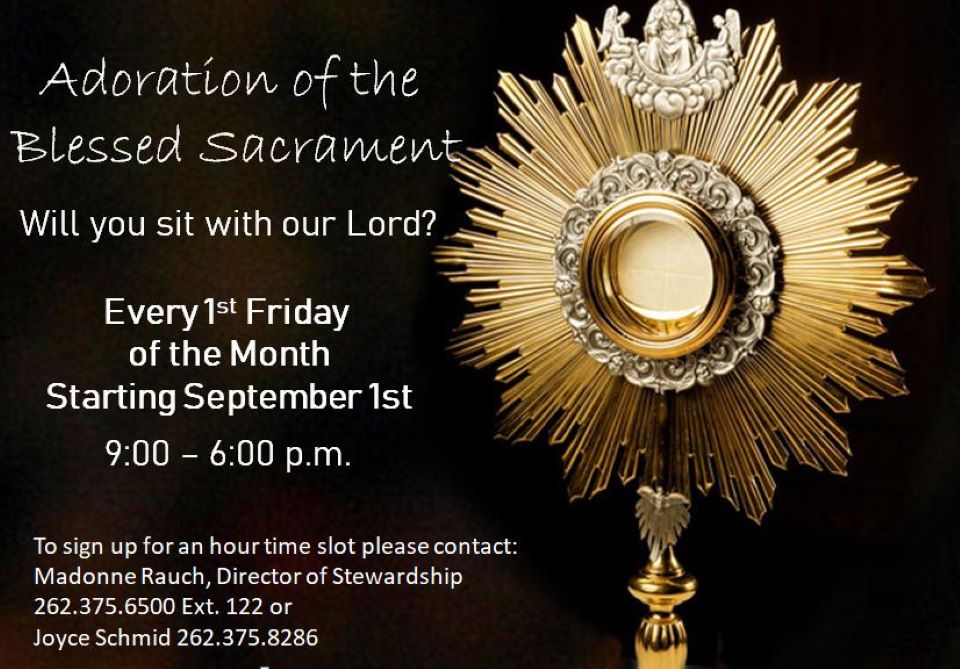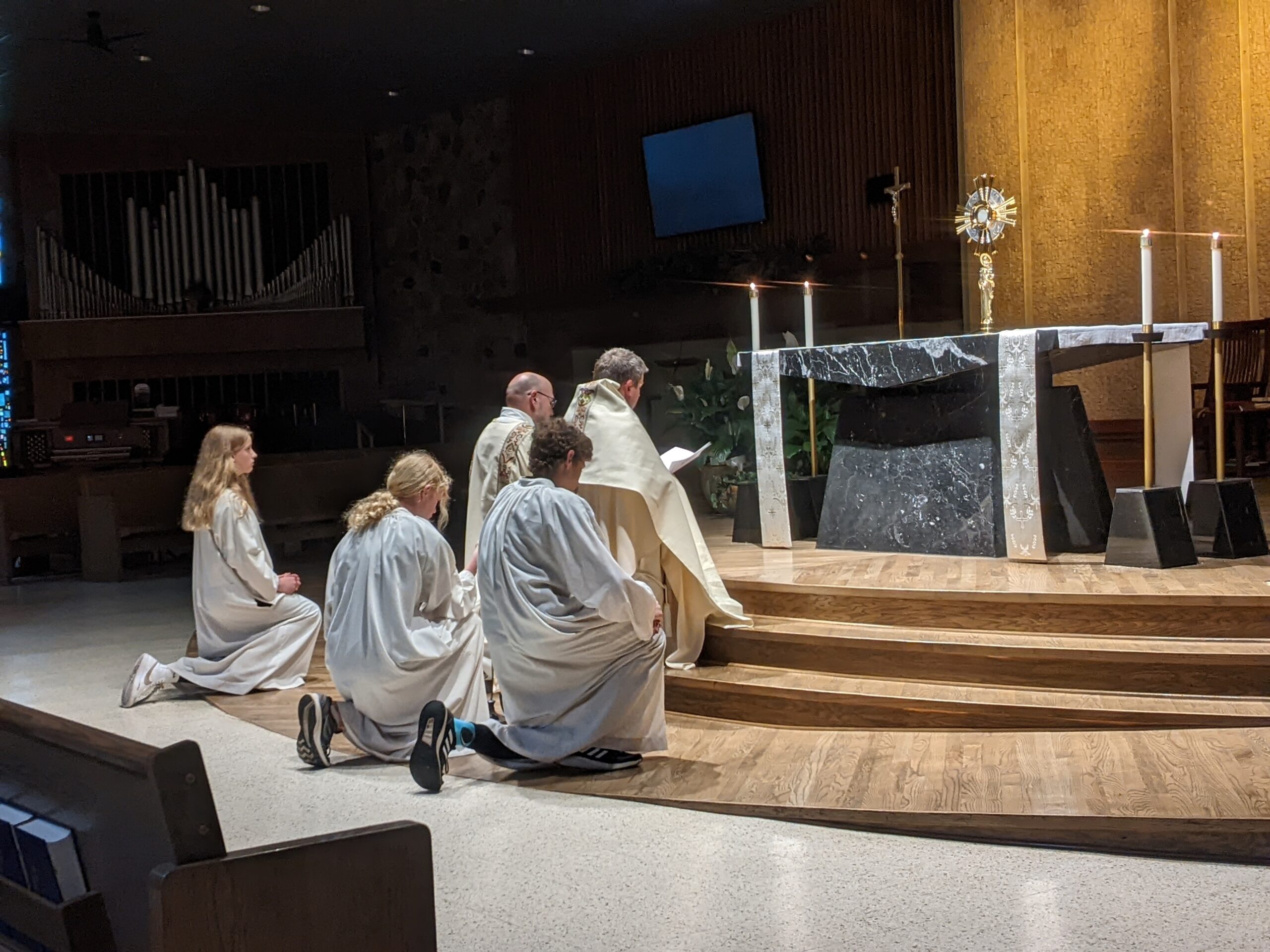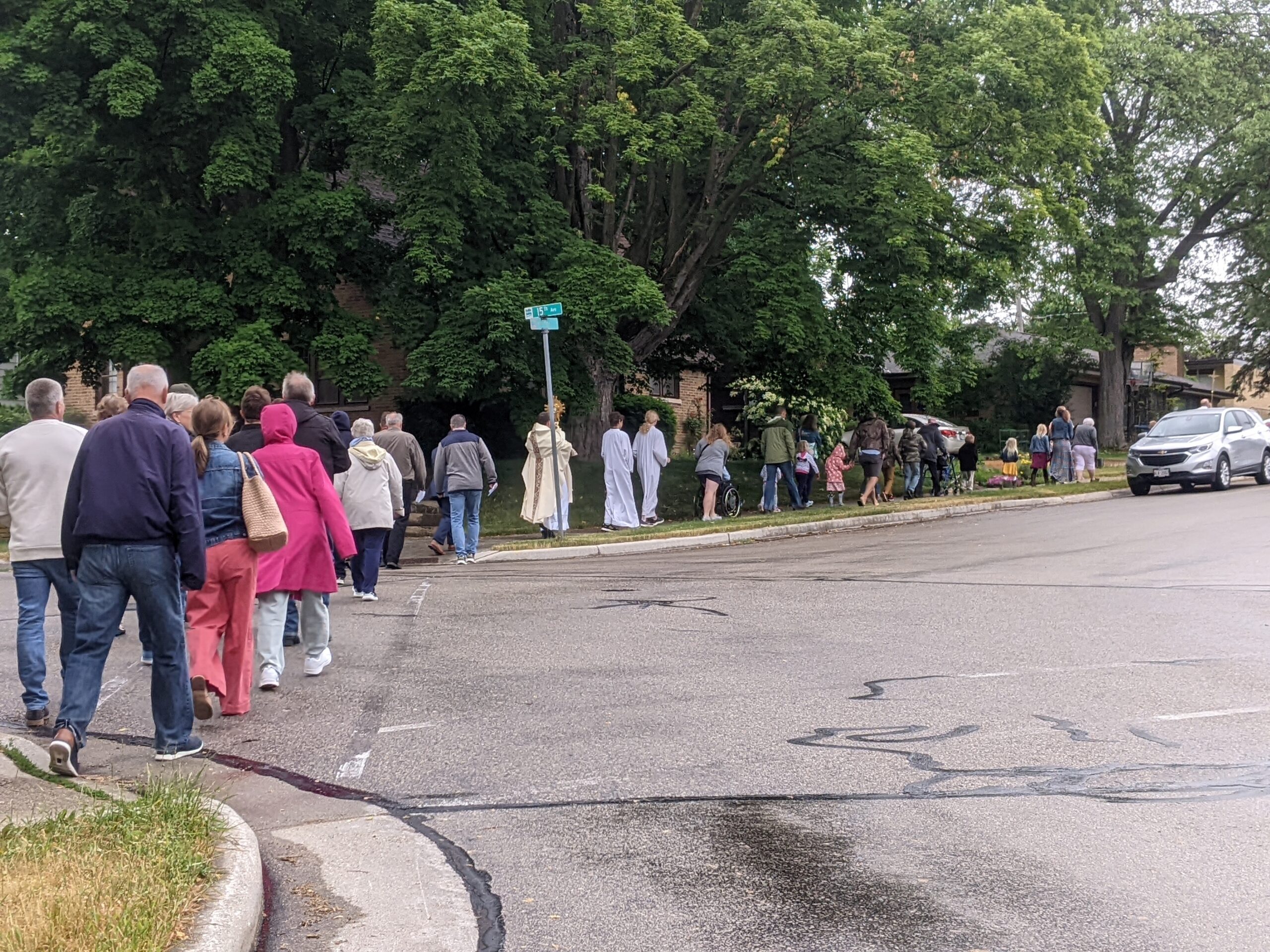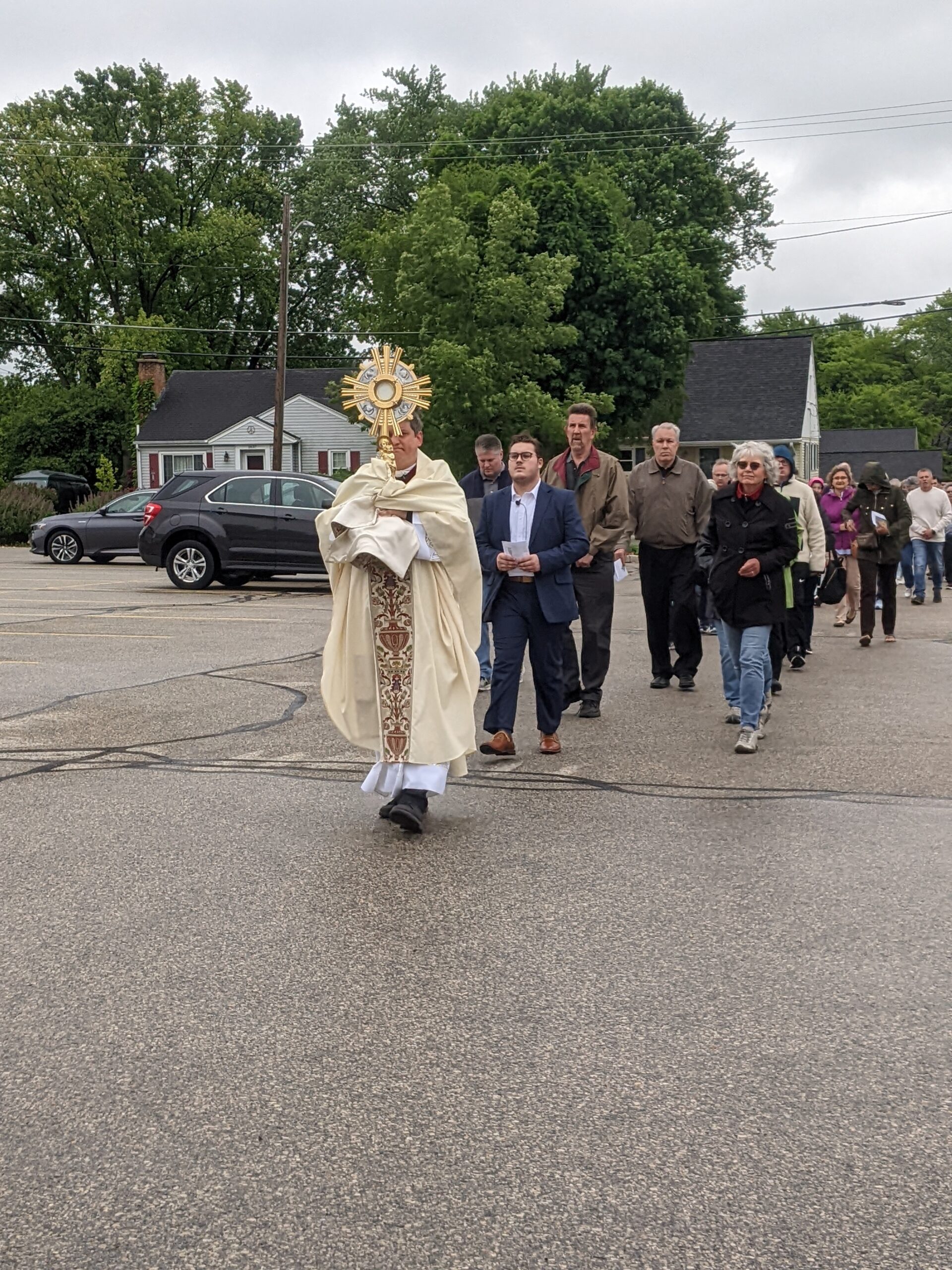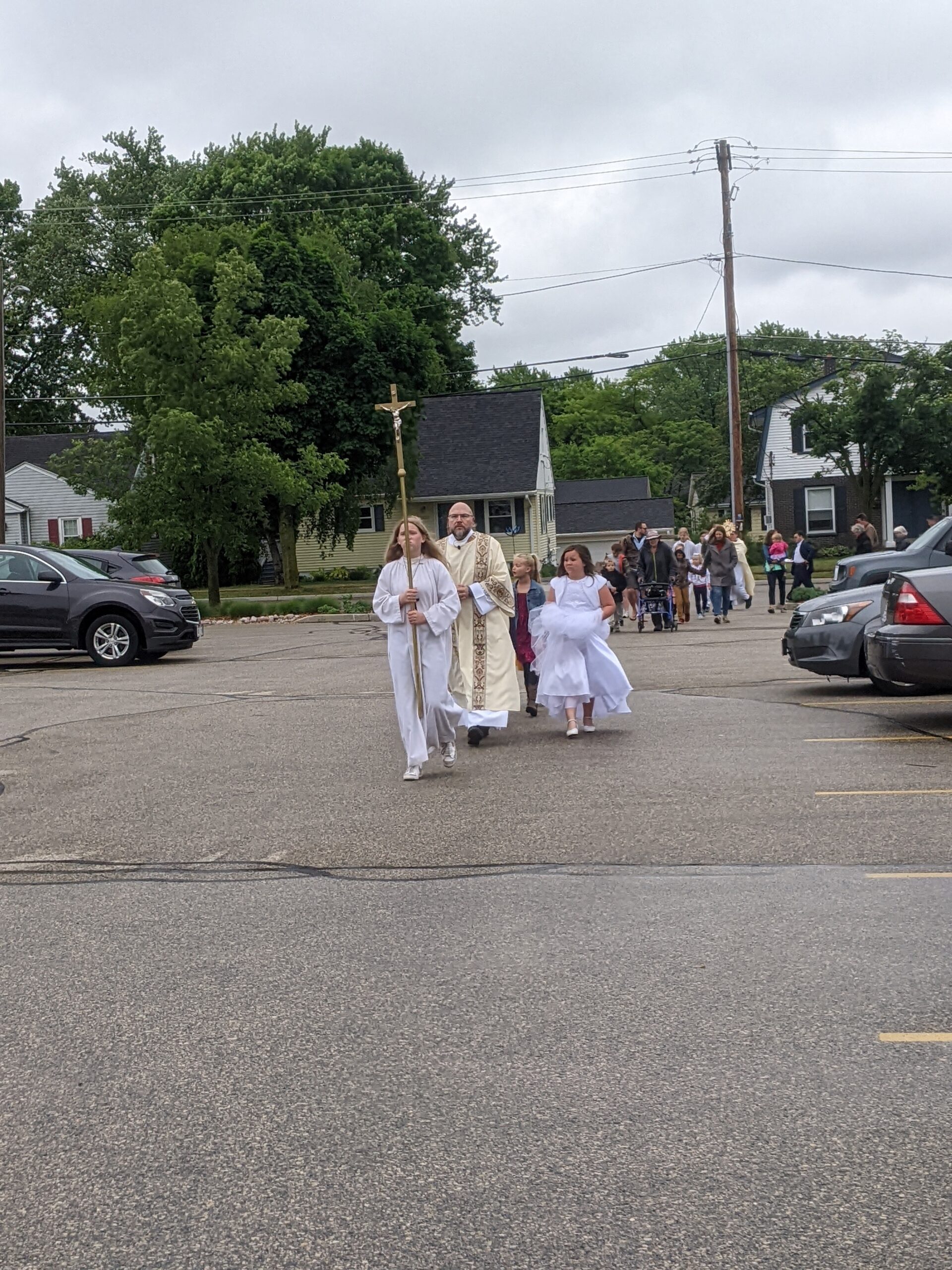Behold, I make all things NEW
An Exciting Journey Ahead
Our world is hurting. We all need healing, yet many of us are separated from the very source of our strength. Jesus Christ invites us to return to the source and summit of our faith in the celebration of the Eucharist. The National Eucharistic Revival is a movement to restore understanding and devotion to this great mystery here in the United States by helping us renew our worship of Jesus Christ in the Eucharist.
Watch the video to learn more about the exciting journey ahead and how you can be a part of it!
Eucharistic Adoration
During Eucharistic Adoration, the faithful pray to Jesus Christ, who is present in the Eucharist. The Eucharist, also referred to as the Blessed Sacrament, is kept in the tabernacle.
While it is true that you can pray to God anywhere and that He is always within you, it is especially powerful to adore Jesus in the Eucharist. In the presence of the Eucharist, we pray to the power and sacrifice that it represents — the body of Jesus, who gave His life so that we may live.
It is His body, blood, soul and divinity that is really, truly, and substantially present in the Eucharist.
We adore and receive the Eucharist in communion at Mass, which is the most beautiful act of worship that we have as Catholics. We have Jesus truly present in all of the tabernacles around the world. We can continue to adore Him in the Eucharist after Mass in a quiet time of prayer and contemplation on Who we have just received . Being in the presence of the body, blood, soul and divinity of Jesus Christ gives spiritual strength and nourishment in a uniquely powerful way.
For those not familiar with Eucharistic Adoration, Guide to Adoration might be of interest.
What is a Eucharistic Procession?
Normally, after Mass is finished, the Eucharist is reserved in the tabernacle. Sometimes the Eucharist is put on display in a monstrance for people to pray in front of (See Picture). This is called Eucharistic Adoration and it usually takes place in a church. A Eucharistic Procession is when the Eucharist is brought outside of the walls of the church and into the surrounding neighborhood. The priest carries the Eucharist in the monstrance and parishioners are invited to follow after in procession. Eucharistic Processions can take various routes and be of various lengths.
Why do a Eucharistic Procession?
There’s a reason the last words of the Mass begin with the word “Go.” “Go in peace, glorifying the Lord by your life.” “Go and announce the Gospel of the Lord.” We have received Jesus in the Eucharist, but Jesus doesn’t just want to remain in the church. He wants to be brought into our neighborhoods: our homes, our businesses, our places of relaxation and entertainment. There is no place that Jesus does not want to go! But we must take Him there! We are called to be public
witnesses to our faith, and not to hide our faith under a bushel basket. If we really believe that Jesus is present in the Eucharist—and this is what we believe as Catholics—then we are called to publicly witness to that faith. One of the ways to do that is to bring the Eucharist out into our streets (or at least our sidewalks). “Go out…into the streets and invite to the feast whomever you find” (Mt. 22:9).
We are joining countless bishops, dioceses, parishes, and apostolates to be healed, converted, formed, and unified by an encounter with Jesus in the Eucharist — and sent out in mission “for the life of the world.” The mission of the Revival is “to renew the Church by enkindling a living relationship with the Lord Jesus Christ in the Holy Eucharist.”
What is the Real Presence of Christ in the Eucharist?
The Real Presence of Christ in the Eucharist is a central dogma of the Catholic faith: when the priest consecrates bread and wine during the Mass, they are transformed into the literal body and blood, soul and divinity of Jesus Christ. The Catechism puts it this way: “The power of the words and the action of Christ, and the power of the Holy Spirit, make sacramentally present under the species of bread and wine Christ’s body and blood, his sacrifice offered on the cross once for all” (1353).
“By this sacrament,” the Catechism says, “we unite ourselves to Christ, who makes us sharers in his body and blood to form a single body” (1331).
Eucharistic Adoration with Archbishop Listecki
Bishop Barron on the Mystery of Eating Jesus' Flesh
Bishop Barron on Misunderstanding the Eucharist
Bishop Hying: What really happens to the bread & wine?
Imagine Mary’s First Communion
with Dr. Edward Sri
Have you ever wondered what it would have been like for Mary to receive her first Holy Communion? Dr. Sri invites us to reflect on the mystery of that moment, and explains the profound connection between Mary carrying Jesus in her womb and a person receiving Communion.
Mary’s First Communion
“ At the Annunciation, Mary conceived the Son of God in the physical reality of his body and blood, thus anticipating within herself what to some degree happens sacramentally in every believer who receives, under the signs of bread and wine, the Lord’s body and blood.” – St. John Paul II
“What must Mary have felt as she heard from the mouth of Peter, John, James, and the other Apostles the words spoken at the Last Supper: “This is my body which is given for you (Luke 22:19)? The body given up for us and made present under sacramental signs was the same body which she had conceived in her womb!” – St. John Paul II
“For Mary, receiving the Eucharist must have somehow meant welcoming once more into her womb that heart which had beat in unison with hers.” – St. John Paul II
“Mary lived her Eucharistic faith even before the institution of the Eucharist, by the very fact that she offered her virginal womb for the Incarnation of God’s Word.” – St. John Paul II
The Real Presence is Real
with Dr. Edward Sri
Do we truly believe that the Eucharist is the real presence of Jesus? Today, Dr. Sri reminds us that the God of the universe is dwelling among us in all the tabernacles of the world. He encourages to live a Eucharistic faith so that we may draw near to Jesus who longs to be close to us.
The Jesus who walked the streets of Galilee giving sight to the blind, raising the dead, and making the paralyzed walk, is the same Jesus who is present to you in the Eucharist longing to work miracles in your life.
As Catholics, we believe that Jesus is truly present in the Eucharist- Body, Blood, Soul and Divinity. However, do we really live like this is a reality? Do we drop everything to see him and spend time with Jesus? Jesus dwells in all the tabernacles of the world and he longs to be near to us. He desires to heal all our wounds and transform us deeply.
“Everyone understands that the crown of thorns is an absolutely unique and extraordinary relic, but the Blessed sacrament is our Lord, really present in his body, soul, divinity and humanity, and you understand that it’s hard to see someone you love perish in the blaze. As firefighters, we often see casualties from fire and we know its effects this is why I sought to preserve above all the real presence of our Lord Jesus Christ.”– Notre Dame Priest
I Am Here
“When you look at the crucifix, you understand how much Jesus loved you then. When you look at the Sacred Host, you understand how much Jesus loves you now.”
St. Teresa of Calcutta
